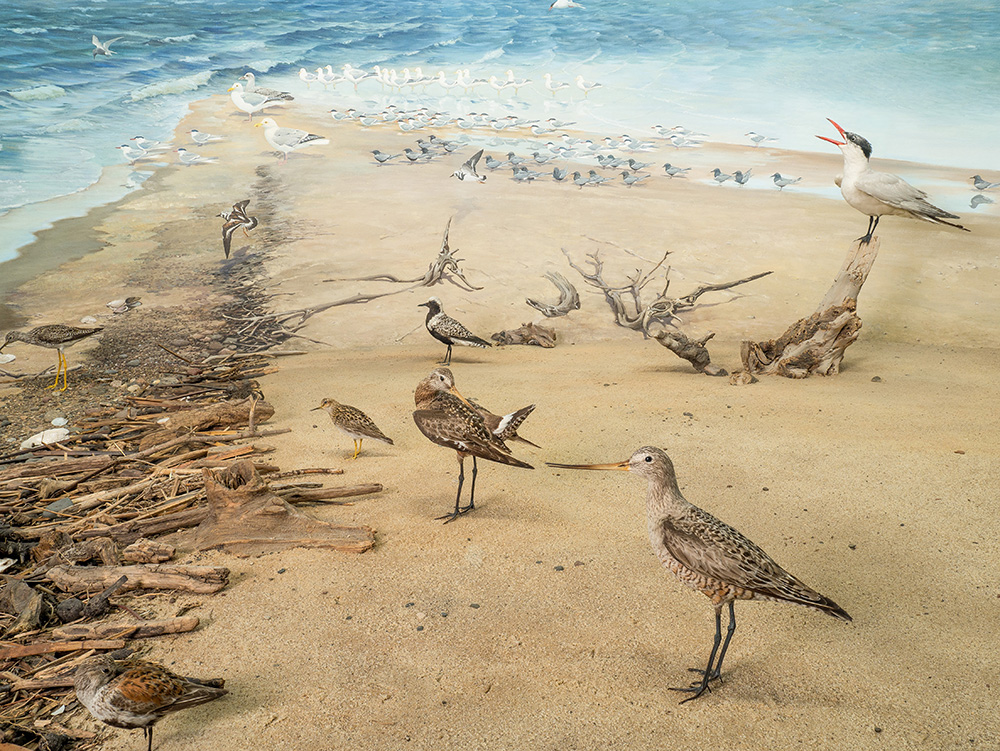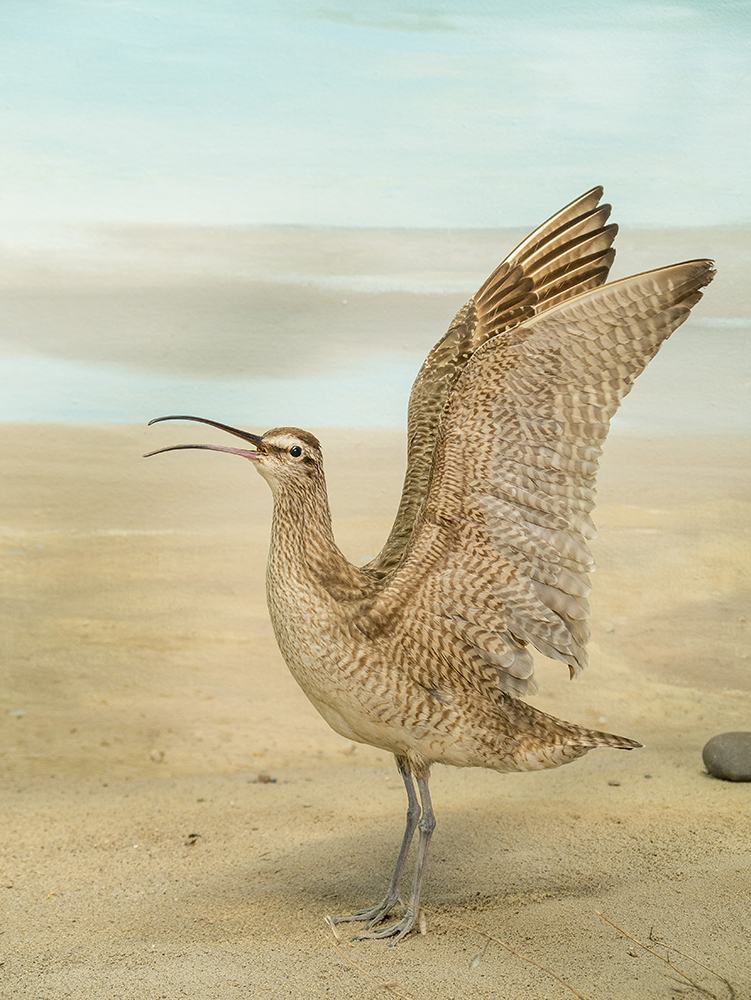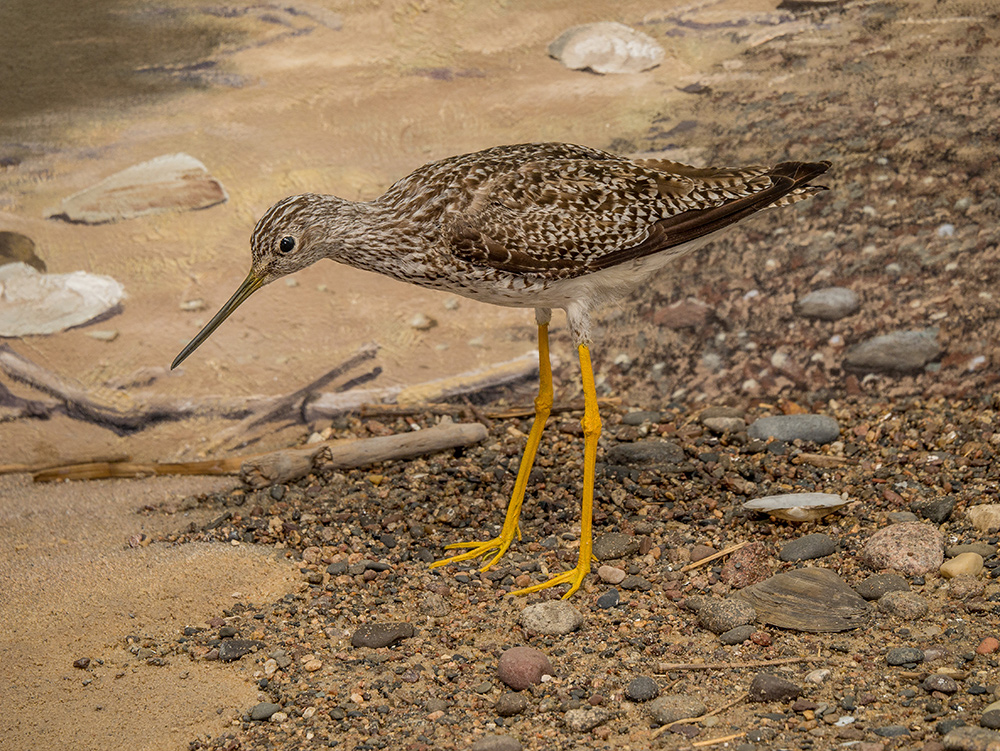
Diorama Spotlight: Lake Pepin’s Sand Point
Springtime on the Shore
Published04/17/2020 , by Amber Kastner, public science events manager
As the great Mississippi River flows through Minnesota, it finds a place to spread out in the southeastern corner of our state. Sheer bluffs in the distance remind us of the passage of time here. Thousands of years ago, racing currents of glacial melt water carved its way through this valley. As the waters receded and the currents slowed, the modern river was revealed. It journeys to a spot where sediment from an incoming stream has formed a sand spit stretching out into a long lake. It moves further and meets another river delta partially blocking the flow of the mighty Mississippi and forming a natural impoundment. This is Lake Pepin.
Located between Red Wing and Wabasha, Minnesota, Lake Pepin sits on the state’s border with Wisconsin and is the prominent feature of Frontenac State Park. It is an important nesting and feeding site for numerous bird species along the Mississippi Flyway. This is especially true in the spring, when the available resources at Lake Pepin provide a promising resting spot for thousands of migrating birds. It is with this scene in mind that Francis Lee Jaques and Walter Breckenridge were enticed to depict the shores of Lake Pepin in May 1940. Their observations and collection of materials would be skillfully applied to the creation of one of the Bell Museum’s most memorable springtime dioramas, Lake Pepin’s Sand Point.
I still vividly remember the first time I saw the Lake Pepin diorama in the halls of the museum. From a distance, it is an expansive and calm landscape, gracefully merging swaths of sand, water and sky. There are no large animals or towering trees to pull your attention. Rather, you are physically drawn to walk towards it; to pursue an innate desire to wander out on the jutting point and stand next to the water. Surrounded by a feeling of depth, it takes a moment to recognize there is no wall or floor. Jaques and Breckenridge have expertly blended the flat background and three-dimensional foreground to create a scene that expands for miles.

There is a flurry of activity along the shore with more than 20 bird species represented. Prominently featured here are the hudsonian godwit (lower right) and caspian tern (upper right).
It is only once you are upon the diorama that you witness the chaotic nature hidden within. The tossing waves rush forth, depositing driftwood, pebbles, and the shells of threeridge mussels along the shore. You begin to see the wind lifting terns high above the water and imagine their rapid dives below the surface to capture small fish in their sharp beaks. Standing near native green ash and sand cherry, a whimbrel extends its wings and shows off its curved bill. Sandpipers, plovers, and gulls gather in the hundreds at the water’s edge and are joined by a spiny softshell turtle slowly moving on to the beach to warm itself in the springtime sun.
Each animal has been thoughtfully placed in the scene to show the bounty and diversity of this place. Some, like the endangered piping plover, remind us of the effects of habitat loss all along the flyway. During spring migration, shorebirds can indeed gather in these large numbers. They come together to rest and feed, but each is highly adapted to occupy a particular part of the landscape. The greater yellowlegs with its long legs and bill will wade into deeper waters in search of minnows. The numerous plovers and sandpipers prefer to stick to the shallower water’s edge as they collect invertebrates from the sand. Gulls and terns take to the sky, scooping up fish from under the surface of the lake. Each contributes to the specialness of this place within Minnesota’s landscape and reminds us of the activity present during springtime on the shore.
Lake Pepin’s Sand Point
Location: West side of Lake Pepin, Sand Point in Frontenac State Park, Goodhue County, Minnesota
Biome: Southeast forest and riverine habitat
Season: May/June
Date completed: 1940
Dimensions: 10’x 20’
Background artist: Francis Lee Jaques
Foreground artist: Walter J. Breckenridge
Restoration 2017: Midwest Art Conservation Center, Chase Studios, Museum Professionals, Split Rock Studios
Donors: James Ford Bell, founding donor; Diorama Legacy Society, restoration donor





